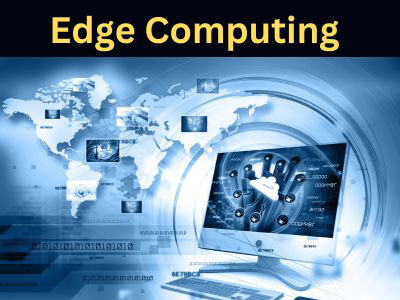Key Takeaway
5G edge computing combines the speed of 5G networks with edge data processing. It enables faster data transfer and real-time analytics at the edge, reducing latency and ensuring quick responses. This is crucial for applications like autonomous vehicles, smart factories, and AR/VR experiences.
By leveraging 5G’s high bandwidth and low latency, edge computing processes data closer to users, improving efficiency. It supports IoT growth, enhances reliability, and drives innovation in industries relying on real-time operations.
The Connection Between 5G and Edge Computing
The connection between 5G and edge computing is a powerful synergy that is set to drive the future of technology, particularly in fields requiring low latency, high-speed data transmission, and real-time processing. As 5G networks continue to roll out globally, they promise to transform industries by enabling ultra-fast, reliable, and low-latency communication. When combined with edge computing, this creates an ideal infrastructure for delivering seamless, real-time experiences.
5G offers data speeds up to 100 times faster than its predecessors, with ultra-low latency of just a few milliseconds. This makes it a perfect complement to edge computing, where real-time data processing is essential. Edge computing places data processing closer to the source, reducing the need for data to travel long distances to cloud servers. When paired with the speed and low latency of 5G, edge computing can process and analyze data almost instantly.
For example, in smart cities, the combination of 5G and edge computing enables real-time monitoring and management of urban infrastructure, such as traffic lights, public transportation, and utilities. In autonomous vehicles, 5G ensures that vehicles can communicate with each other and their surroundings instantly, while edge computing processes sensor data in real time to make quick decisions about braking, navigation, and route adjustments.
In industrial IoT (IIoT), 5G networks combined with edge computing will drive advancements like remote monitoring, predictive maintenance, and automation of factory processes. This connection will allow manufacturers to enhance operational efficiency, reduce downtime, and improve product quality.

How 5G Improves Edge Computing Capabilities
The rollout of 5G networks is a game-changer for edge computing. By offering high-speed connectivity, low latency, and increased bandwidth, 5G enables edge devices to process and transmit data faster and more efficiently. This is especially crucial in industries where real-time decision-making is vital, such as autonomous vehicles, smart cities, and healthcare.
5G enhances edge computing by enabling seamless communication between edge devices and the cloud, as well as between different edge devices in the network. With the ultra-low latency of 5G, devices can instantly respond to real-world changes, ensuring faster reactions and better performance.
In autonomous driving, for example, 5G ensures that data from the vehicle’s sensors, cameras, and onboard systems are processed and shared with nearby infrastructure (such as traffic lights and other vehicles) with minimal delay, enabling safer and more efficient driving. Similarly, in healthcare, 5G-powered edge computing enables doctors to remotely monitor patients in real-time, delivering timely interventions based on data from wearable devices.
The speed and reliability of 5G networks also make edge computing more scalable. As the number of connected devices continues to grow, 5G ensures that the increased volume of data generated by these devices can be processed efficiently at the edge, avoiding network congestion and latency issues.
You May Like to Read
Real-Time Applications Enabled by 5G Edge Computing
Real-time applications thrive on the low latency and high speed provided by 5G and Edge Computing. From gaming and virtual reality to industrial automation, these technologies ensure seamless performance for systems requiring immediate responses.
For example, autonomous vehicles rely on 5G Edge Computing to process sensor data in real-time, ensuring safe navigation and quick decision-making. In smart cities, real-time traffic management systems analyze data locally, optimizing flow and reducing congestion.
This ability to act instantly opens up endless possibilities, pushing the boundaries of what real-time applications can achieve.
Benefits of 5G Edge in IoT and Smart Cities
The combination of 5G and Edge Computing is a driving force behind the growth of IoT and smart city applications. By enabling faster data transfer and localized processing, it supports interconnected systems that improve urban living.
In smart cities, 5G-powered edge systems manage energy consumption, optimize public transportation, and enhance security through real-time surveillance. For IoT, devices like smart home appliances and wearable health monitors operate more efficiently, with reduced latency and improved performance.
This integration creates a seamless, interconnected ecosystem that fosters innovation and sustainability across industries and urban environments.
Future Innovations with 5G and Edge Integration
The future of 5G and Edge Computing holds exciting possibilities, from advancements in augmented reality to breakthroughs in industrial automation. These technologies will play a pivotal role in enabling innovations like digital twins, where real-world systems are replicated virtually for monitoring and optimization.
In sectors like healthcare, 5G Edge Computing will support precision medicine by analyzing patient data in real-time for personalized treatments. Similarly, in manufacturing, it will drive predictive maintenance by instantly detecting and resolving equipment issues.
The integration of 5G and Edge will continue to redefine technological boundaries, driving industries into a smarter, more efficient future.
Conclusion
5G and Edge Computing together form a powerful partnership that is revolutionizing technology. By combining ultra-fast connectivity with localized data processing, they unlock new possibilities in real-time applications, IoT, smart cities, and beyond.
This synergy is paving the way for future innovations across industries, transforming how we live, work, and interact with technology. As adoption grows, 5G Edge Computing will become a cornerstone of modern infrastructure, delivering faster, smarter, and more reliable solutions.
